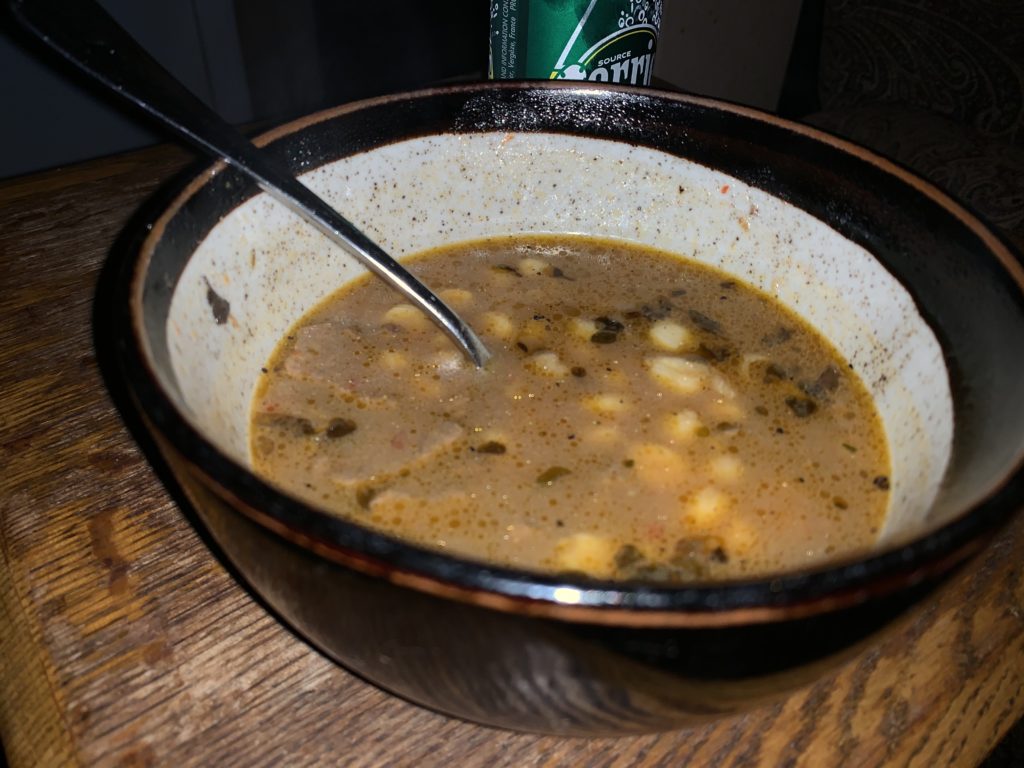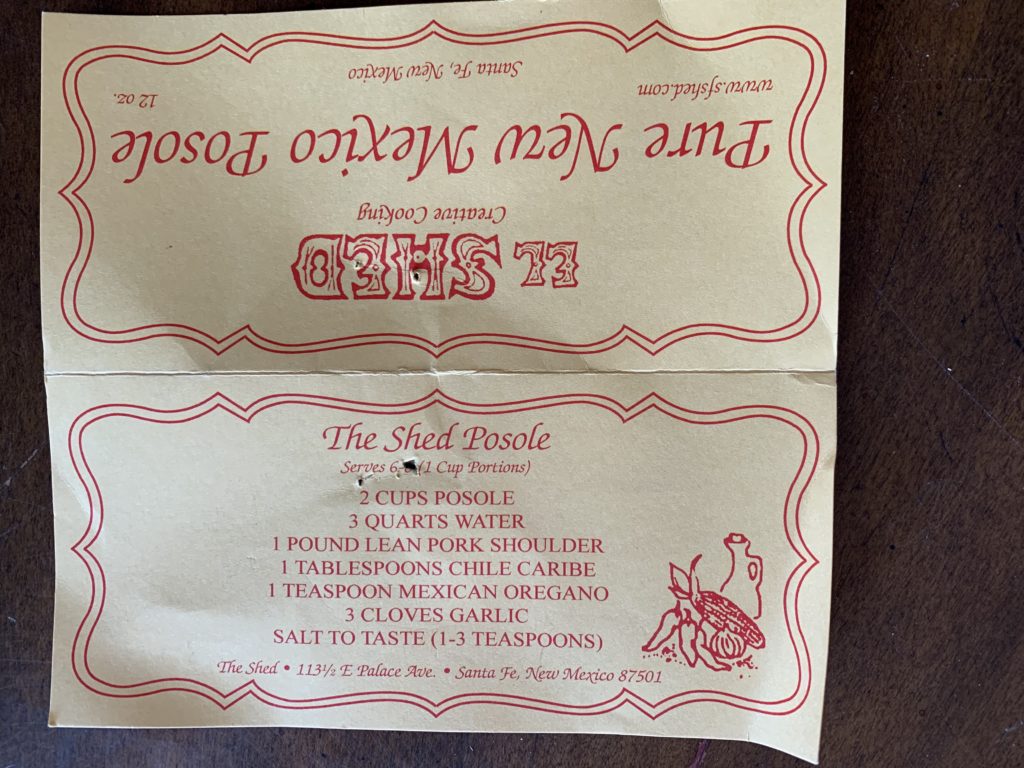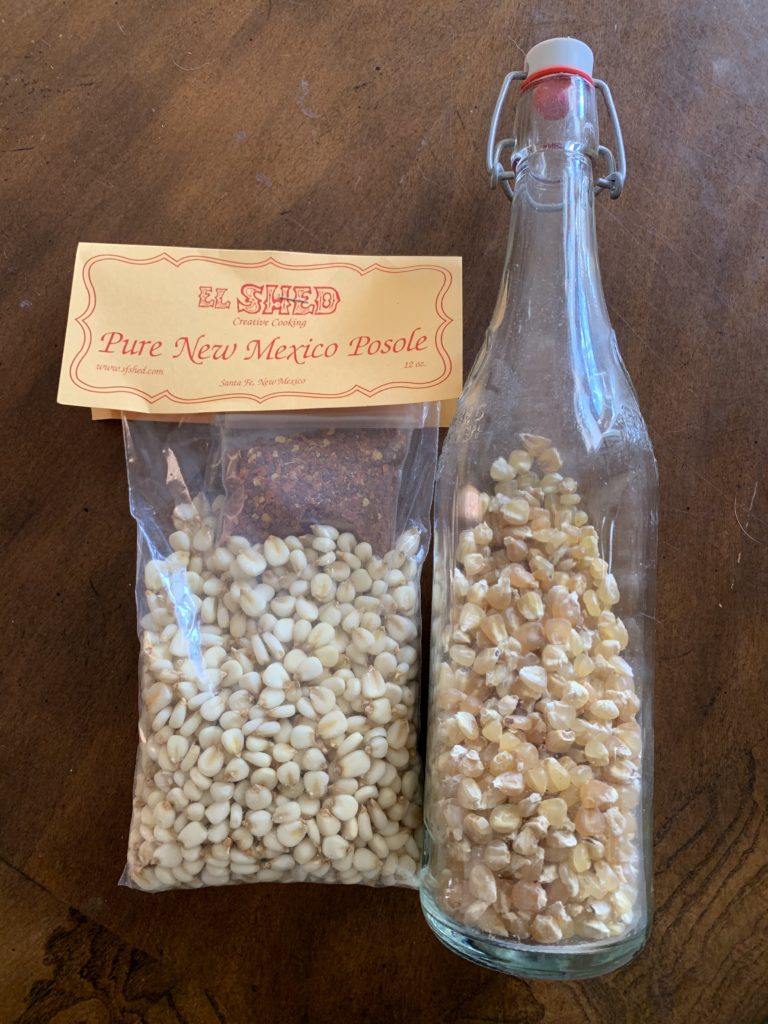Corn is a sacred plant for the Aztecs and posole was made for special occasions, with its whole hominy kernels, of interest to scholars because the ancient Mexicans believed the gods made humans out of cornmeal dough. According to research by the National Institute of Anthropology and History and the Universidad Nacional Autónoma de México, on these special occasions, the meat used in the pozole was human. According to Wikipedia sources, after the conquest, when cannibalism was banned, pork became the staple meat as it “tasted very similar”, according to a Spanish priest.
Posole stew is a New Mexico holiday tradition often served on high occasions, such as Christmas Eve, where a steaming hot bowl of posole is still revered as a ceremonial dish for celebrating life’s blessings. In New Mexico, posole often blends the three influences of the Native American, Mexican, and European. Posole is different from hominy, by its soaking in water and lime juice, and may often make it with chicken rather than pork. While posole in Southern New Mexico is always made with red chile, in Northern New Mexico posole is usually made with green chile.
Some add tomato sauce to the mix, but we find it detracting, rather than additive. Toppings can make or break the dish so feel free to add what you like to garnish at the end.
Hank Shaw writes, “In a perfect world, you would nixtamalize your own corn, nip off the root end of each kernel, and simmer that with a pig’s head. This is what I did. Why is this the perfect base for pozole? Because this is how it’s been made, more or less, for centuries in Mexico. The freshly nixtamalized corn (here are my instructions on how to make nixtamal) tastes so much better than either canned hominy or dried, pre-nixtamalized corn, that it’s hardly the same soup.”
He describes this type of pozole as “White pozole, pozole blanco, is a specialty of the Mexican state of Guerrero, and is considered by some the purest of all pozoles. Unlike my recipes for pozole verde and pozole rojo, this version represents the third color of the Mexican flag — and yes, a galaxy of dishes a la bandera, like the flag, exists in Mexico.”
While this is not as intricate as Hank’s recipe, this is our family recipe for pozole, which is fairly quick and easy and doesn’t require a pig’s head or making your own hominy/nixtamal:
INGREDIENTS:
- 1 c. roasted Hatch green chiles, chopped
- 10 lbs. Boston butt pork shoulder roast cut into 1″ cubes
- 1/2 head of garlic peeled and chopped
- 2 T. Mexican oregano
- 1/2 of a large onion, chopped
- Large can hominy, drained and rinsed
- 2 T. French sea salt
INSTRUCTIONS:
Break open the roasted chiles and remove the seeds and veins, and roughly chop. Put chiles, the cubed pork, oregano, garlic, onion and salt into a large heavy pot and cover with water. Boil meat gently for 30 minutes. When the meat is soft, add the chile and hominy and cook for 15 to 20 minutes until the mixture is boiling nicely. To serve, ladle the posole into heavy bowls and serve with thinly sliced cabbage and radishes, quartered limes, oregano, chopped onion, and fresh corn tortillas. Besides these side dishes, posole is usually served with a topping of queso fresco and fried corn tortillas as a side and/or topping.
ADDITIONAL OPTIONAL TOPPINGS:
- Sliced radishes
- Finely shredded cabbage
- Avocado chunks
- Cilantro sprigs
- Green onions
- Lime wedges





Leave A Comment
You must be logged in to post a comment.